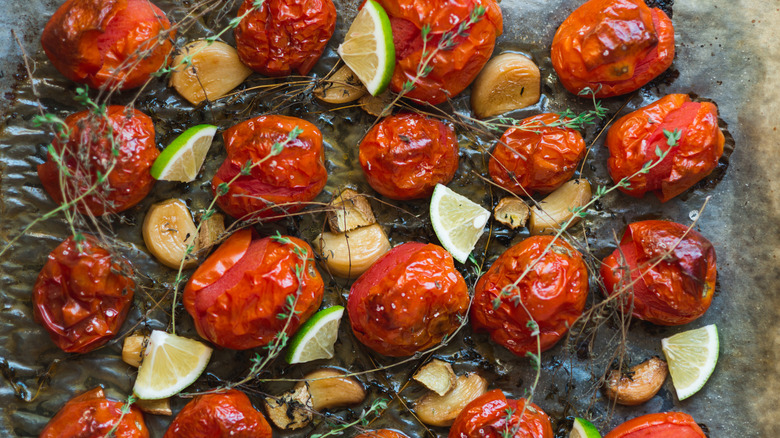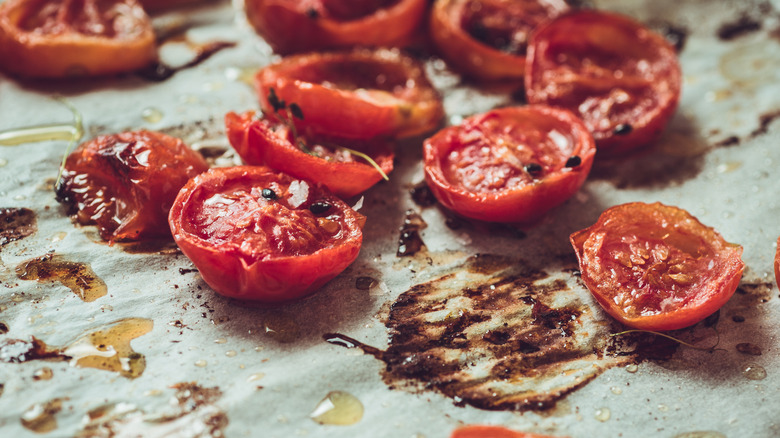Say Goodbye To Soggy Roasted Tomatoes By Avoiding This Simple Mistake
Roasting tomatoes is a great way to coax extra flavor out of them, even if they aren't the most flavorful to begin with (just ask Ina Garten). Doing so not only drives out excess moisture, but also concentrates sugar and glutamates, which makes the tomatoes both sweet and savory at the same time. It's easy to roast your own tomatoes at home to achieve deep flavor, but since tomatoes are juicy by nature, you don't want them to stay soggy after they're done cooking. We spoke to Matt Harding, chief innovation officer at Piada Italian Street Food, to get some tips on how to prevent roasted tomatoes from getting too soggy.
Harding told us that your first consideration should be the tomato itself. "For best results use a thicker-walled tomato ... [S]ome people say only use Romas, but you can use round tomatoes, too," he explained. "You need to tailor the roasting experience to the type of tomato to avoid soggy roasted tomatoes."
The method you use to roast your tomatoes is also important. For example, leave plenty of room between each slice on the roasting pan. Harding said that halving your tomatoes (or quartering large ones) is the best place to start. "Leave at least ¼ inch space around each tomato for halved Romas," he instructed. "And if the tomatoes are bigger, leave a ½-inch space between pieces." That space will allow moisture to escape, helping the tomatoes shrink during the roasting process.
Expert tips for slow-roasting your tomatoes
Another key consideration for roasting tomatoes is temperature. Matt Harding told us he prefers a low-and-slow method in which he keeps his oven between 250 and 275 degrees Fahrenheit and roasts the tomatoes for "2.5 [to] 4 hours, depending on size and water content." He added that you'll know you're finished when the edges are caramelized and the fruit is "wrinkled but still supple — like 'sun-dried' tomatoes with more moisture and richer flavor."
The reason you want to go low and slow is because if you roast at a higher temperature, you risk burning the sugar in the tomatoes before the moisture cooks off. According to Harding, "Slow heat concentrates flavor and preserves color and nutrients." If you want to change the flavor profile up a bit, Harding recommends adding garlic cloves, balsamic vinegar for added sweetness, or (if you're aiming for an umami punch) anchovies or capers. To get the best effect, just ensure that you remove as much moisture as possible, which also means avoiding the mistake of using too much oil. This is why your choice in tomato variety is important, as is the amount of space between each tomato on your roasting pan.

